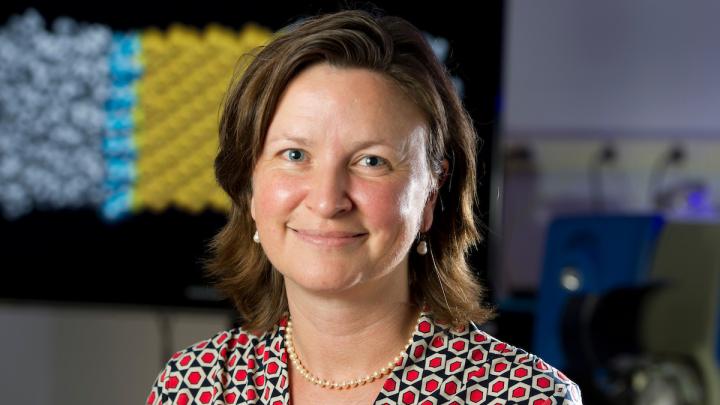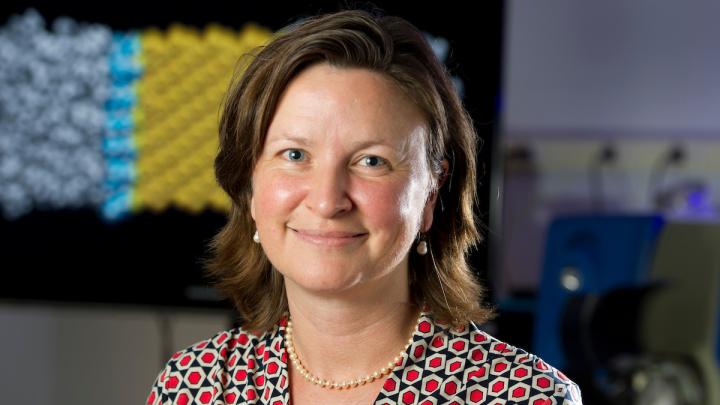
Credit: Barbara Johnston/University of Notre Dame
Determining how proteins function on a molecular level is crucial to understanding the underlying basis for disease. Now scientists at the University of Notre Dame are one step closer to unraveling the mystery of how intrinsically disordered proteins work, according to new research published in Science.
Proteins are chains of amino acids that fold into three-dimensional structures, giving them their shape and determining the way they interact with other molecules. Many proteins form rigid structures, but intrinsically disordered proteins (IDPs) are "floppy" and do not fold into a regular structure. These disordered proteins are floppy because their parts interact just as well with water as with each other. Up to 30 percent of all proteins are disordered — and must be disordered in order to work properly.
Researchers have struggled to understand precisely how disordered IDPs are — and how they work. Their floppy structures make it difficult to extract their exact dimensions, making the extent of that disorder, along with the strengths of the interactions, unclear. These details are crucial to understanding how IDPs carry out their necessary functions in cells.
"We have excellent methods available for determining the structures of proteins that fold into one rigid structure, but a significant fraction of all proteins are too flexible to be studied using these methods. Even worse, results from two of the most commonly used methods to study IDPs disagree with each other," said Patricia Clark, a biophysicist at Notre Dame and co-author of the study. "So we developed a novel analysis procedure to help resolve this."
Clark, the Rev. John Cardinal O'Hara C.S.C. Professor of Chemistry and Biochemistry at Notre Dame, worked with Tobin Sosnick, a professor and chair of the Department of Biochemistry and Molecular Biology at the University of Chicago, to develop a new small-angle X-ray scattering (SAXS) analysis method that showed most IDPs are more disordered than previously thought. SAXS is one of the two ways researchers extract dimensions of IDPs. In SAXS, proteins are placed in the path of an X-ray beam, scattering the X-rays in patterns that contain information on the protein's size and shape.
Clark and Sosnick's new approach analyzes a broader range of the X-ray scattering pattern than previous SAXS methods and fits these patterns to IDP structures with different degrees of disorder generated by computer simulations.
This discovery advances the discussion between researchers who use SAXS to study IDPs and those who use a different method, fluorescence resonance energy transfer (FRET). With FRET, researchers attach molecules called fluorophores to the protein, then determine the size and shape of the IDP by calculating the distance between the fluorophores. In recent FRET studies, researchers have concluded that IDP parts interact more strongly with each other than with their surroundings, leading to more collapsed structures.
The results shed new light on the controversy between the two research methods, Clark noted. Their SAXS analysis method shows that the floppy structures of IDPs are very close to what would be expected for a truly random structure — which might help prevent IDPs from accidentally interacting with other proteins. Many diseases, including many forms of cancer, are caused by mutations that cause a protein to interact incorrectly with itself or other proteins, Clark said. The advancements made in this work will enable detailed study of folding and misfolding mechanisms. They also will assist with development of new strategies to prevent protein misfolding diseases.
"While this work is a fundamental, basic research demonstration of protein behavior, the implications are really broad," Clark said.
###
The study was funded by the National Institutes of Health and the National Science Foundation. Use of the Advanced Photon Source at Argonne National Laboratory was supported by the U.S. Department of Energy.
Media Contact
Jessica Sieff
[email protected]
574-631-3933
@ND_news
http://www.nd.edu
Original Source
https://news.nd.edu/news/new-protein-study-broadens-knowledge-of-molecular-basis-for-disease/





